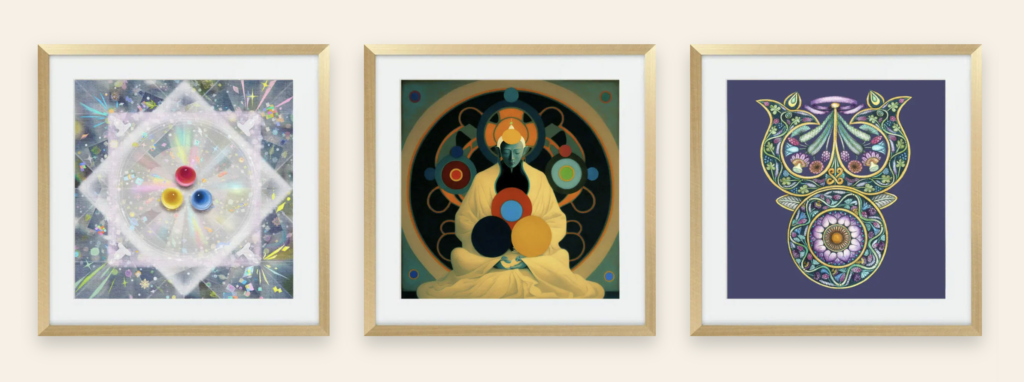
The Beauty of The Three Jewels
The Triratna Anusmṛti Sādhanā project celebrates its second anniversary

In the Triratna Anusmṛti Sādhanā, when we talk about the recollection of The Noble Three Jewels, fundamentally what’s happening is the awareness of Buddha, dharma, and sangha. Actually, it’s really as simple as that … These three are not outside! —Dzongsar Khyentse Rinpoche, Triratna Talk, Feb 2020
For the past 2 years, an international group of practitioners has been gathering online to chant the Triratna Anusmṛti Sādhanā in English, Sanskrit, and Chinese. In March, we resume the regular practice with a new arrangement of the liturgy and, for the first time, include three new languages: Portuguese, Spanish, and Russian. A new translation of “The Noble Sūtra of Recollecting the Three Jewels” by 84000: Translating the Words of the Buddha is also included in the recently edited liturgy. This accessible yet profound sadhana, composed by Dzongsar Khyentse Rinpoche, was first introduced under the Bodhi Tree during the Siddhartha Festival in Bodhgaya in 2018. The sadhana, in all five modern languages, and other resources are available here. Each practice session lasts about 40 minutes.

The Triratna Anusmṛti Sādhanā threaded together a rotating group of familiars and not so familiars at a time the pandemic split worlds apart, turning up the volume on fear, depression, anxiety, grief, loss, and loneliness (not to mention infinitesimal electroshocks of other kinds of unease). The act of coming together in this time, through the encouragement of Dzongsar Khyentse Rinpoche—to remember, recollect, and reflect upon The Three Jewels—quelled the relative disquiet through (seemingly) simple reminders to be kind, generous, and joyful towards each other and ourselves. This three-jeweled compass continues to anchor me to a bigger vision of how to walk in the everyday, like the garden of the soul that it in fact is.
— Simmy Makhijani, USA
Artworks Related to The Three Jewels
As a companion to this new phase of the project, we are also offering an online exhibition that looks at how the triratna symbol is depicted in different cultures and explores modern interpretations of The Three Jewels—Buddha, dharma, and sangha. The exhibition shows how our own regional and cultural sensibilities can be applied to traditional Buddhist representations.

Historically, The Triple Gem has been rendered in a variety of ways. In ancient India, the triratna(Sanskrit: tri-ratna or ratna-traya) symbol is commonly represented by a trident or three wheels and can be found on many ancient coins and stone sculptures. In Japan and Korea, three small circles inside a larger circle are painted on the roofs of Buddhist temples. In Tibetan art, The Three Jewels (Tibetan: dkon-mchog gsum) are typically shown at the bottom of thangka paintings encircled by flames. Visit the exhibition at Siddhartha’s Intent Online Gallery.
The beautiful Triratna practice, including the melodies and bilingual chanting with Sanskrit, has been very enriching in terms of cultivating and strengthening my connection with Shakyamuni Buddha. I feel grateful for this opportunity to do the sadhana practice together online with the sangha, bringing so many of us together from many parts of the world and encouraging a sense of coherence within the community. Our dear teacher very often highlights the importance of remembering and paying homage to The Triple Gem, and this practice allows me to stay connected and strongly aspire for the truth with great admiration for Buddha and his legacy. — Pallavi Deshmukh, India






